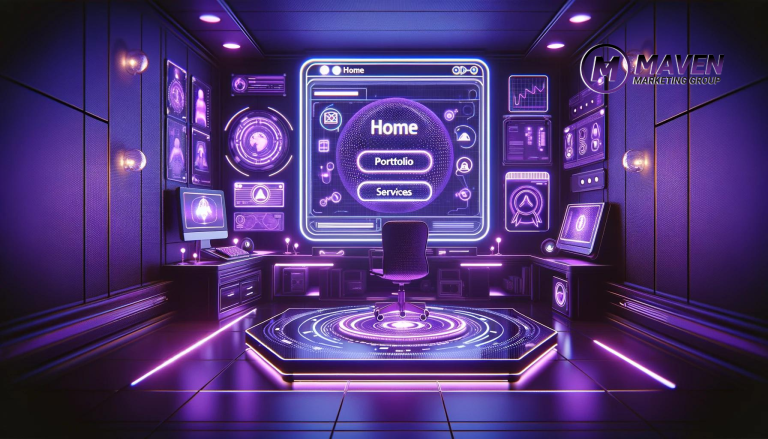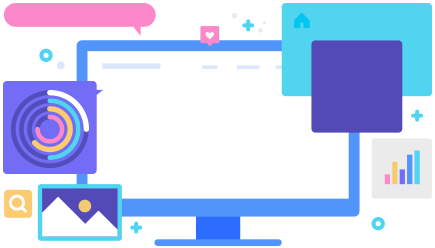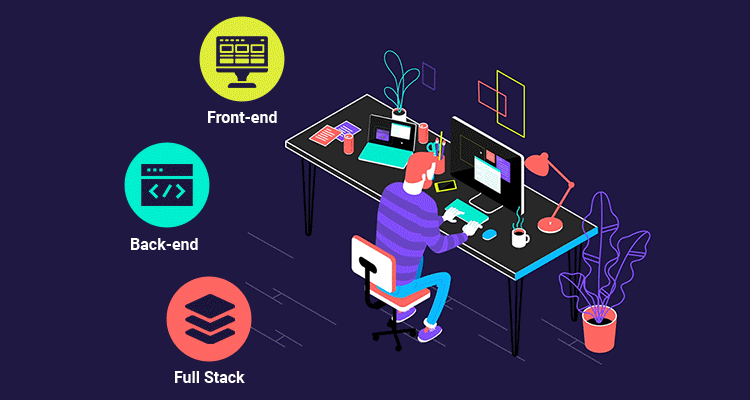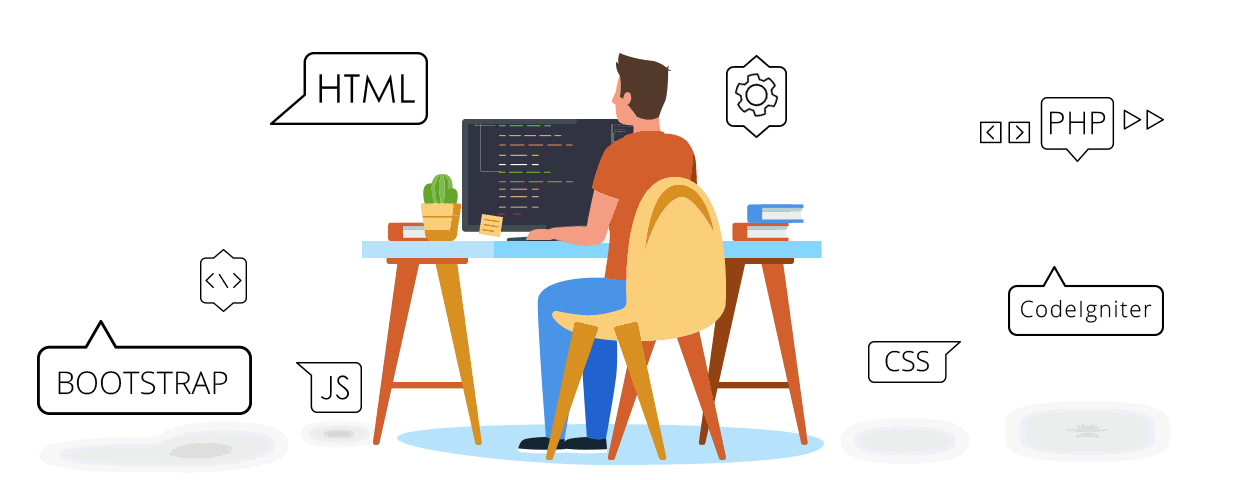
Web development is a vital process in creating functional and user-friendly websites and web applications.
The web development process encompasses coding, designing, and maintenance by web designers and web development professionals to ensure optimal functionality and user experience.
It also involves the work of web content developers.
With the ever-growing significance of establishing an online presence, web development plays a crucial role in the digital landscape for businesses of all sizes.
As technology advances, the field continues to evolve with new languages, frameworks, and trends.
Web developers are professionals who specialize in this domain, employing their expertise to build robust web applications that meet the needs of users and businesses alike.

Web development, the engine behind the aesthetics of a website, can be categorized into three primary types: Front-end, Back-end, and Full-stack development.
Each of the three main types focuses on a different website creation and functionality aspect.
Understanding these categories can offer clarity for those venturing into the web development world or seeking to hire a developer for specific needs.



The three types of web development, full stack, front end, and back end, cater to different aspects of the website creation process.
Each type of coding requires different skills and focuses on different areas of code.
Whether focusing on the user interface, server operations, or both, understanding these specializations is pivotal for successful web development endeavors.
No, each type of website serves a specific purpose and is crucial for the proper use of the internet.
The front end and back end work together to create a fully functional website.
The choice depends on project needs and developer expertise.
Yes, while many developers specialize in one area, having a basic understanding of the other areas can be beneficial.
Consider the needs of your project.
If you require a visually appealing web page, web designers and front-end developers are key.
For full-stack web development and backend work, a back-end developer is essential for database and server-related tasks.
For a comprehensive solution, hiring a full-stack developer who is proficient in both front-end and back-end development is the best choice for building a website.

Web development encompasses various types of computer programming, including front-end, back-end, and full-stack development.
Each type, front end, and back end plays a crucial role in creating functional and visually appealing websites.
Front-end development focuses on the visual aspects of a website that users interact with directly.
As a web developer, you will utilize languages such as HTML, CSS, and JavaScript to create both the front-end and back-end components of a website.
This includes designing the user interface (UI) and ensuring smooth navigation.
Front-end developers work on designing layouts and implementing responsive designs for different devices to enhance user experience on a website.
Pros:
Cons:
Back-end development involves server-side programming and database management to ensure website functionality.
Developers proficient in back-end languages like Python, PHP, or Java work on building the logic behind the scenes of a website.
Back-end web developers handle tasks such as data processing, security measures, and integrating databases for efficient data storage on a static website itself.
They work alongside front-end developers to ensure the smooth functioning of the entire website.
Pros:
Cons:
Full-stack developers possess front-end and back-end development skills, making them valuable assets for any website.
They have a comprehensive understanding of all layers involved in website development—from front-end UI design to back-end server configuration.
Full-stack developers can handle website projects independently or collaborate effectively with specialized front-end or back-end teams.
Pros:
Cons:

When choosing between front-end, back-end, or full-stack development, it’s essential to consider your project requirements.
Take into account factors such as the complexity of the website or application you’re building and the specific functionalities it needs.
This will help you determine which type of web development is most suitable for your project.
Before deciding on a web development type, evaluate your technical skills and interests.
Consider where your strengths lie and what area you would enjoy specializing in.
If you are a web developer with a strong eye for design and enjoy creating visually appealing interfaces, front-end development might be a good fit.
On the other hand, if you prefer working with databases and server-side technologies, back-end development could be more suitable.
If you have an interest in both areas and want to handle end-to-end development, full-stack development might be the way to go.
It’s always beneficial to collaborate with other team members or professionals who can provide guidance based on their expertise.
Seek advice from experienced developers who have worked on similar projects or consult with mentors who can offer valuable insights.
Their input can help you make informed decisions about which web development type aligns best with your project goals.
To ensure that your chosen web development type aligns with future opportunities, it’s crucial to research market demand and trends.
Stay updated on industry news and analyze job listings to understand which types of developers are in high demand.
By aligning your skills with market needs, you increase your chances of finding rewarding career opportunities in web development.

Front-end development is crucial for web developers in creating an appealing user interface (UI) and optimizing the overall user experience (UX).
It involves designing and coding the visible elements of a website or application that users interact with.
This includes everything from layout and typography to buttons, forms, navigation menus, and cascading style sheets.
Front-end developers use programming languages like HTML, CSS, and JavaScript to bring designs to life.
Pros:
Cons:
Back-end development, also known as backend, concentrates on the behind-the-scenes functionality of a website or application.
It involves managing databases, processing data, handling server-side logic, and ensuring smooth interactions between the front end and the server.
Back-end developers work with programming languages like Python, Ruby, PHP, or Java to build robust systems.
Pros:
Cons:
Full-stack development combines both front-end and back-end skills in a single developer.
A full-stack developer is proficient in both client-side technologies (HTML/CSS/JavaScript) as well as server-side technologies (Python/Ruby/PHP/Java).
They can handle all aspects of web development, from UI design to database management.
Pros:
Cons:

We started by defining and explaining the different types of skills needed for web development, providing a beginner’s guide to help you navigate through the options.
Then, we delved into the career prospects in web development, highlighting the diverse paths you can take to pursue your passion.
Moving forward, it is essential to consider key factors when choosing the right web development type for your project.
We discussed these considerations to ensure that you make an informed decision that aligns with your goals.
We highlighted three types of web development that every project should be aware of, giving you valuable insights into some popular choices.
Now that you have a solid foundation in understanding web development types, it’s time to put your knowledge into action.
Whether you’re looking to start a career in web development or embark on a new project, continue exploring each type further and dive deeper into their specific frameworks and technologies.
Keep learning, practicing, and experimenting with different tools as you refine your skills.
Programming languages commonly used in web development include HTML/CSS for front-end development, JavaScript for client-side scripting, and back-end languages like Python, PHP, Ruby on Rails, or Node.js depending on specific site requirements.
Front-end web development involves creating the user interface and designing how websites look using HTML/CSS/JavaScript. Back-end web development focuses on server-side programming responsible for handling data storage, processing user inputs securely, and managing databases.
While there are no strict prerequisites for learning web development, having basic knowledge of HTML/CSS/JavaScript and familiarity with programming concepts can be beneficial. A strong desire to learn, problem-solving skills, and attention to detail are valuable traits in this field.
Web development offers various career paths such as front-end developer, back-end developer, full-stack developer, web designer, UX/UI designer, and web project manager. The demand for skilled web developers is high across industries.
To choose the right web development type for your project, consider factors like project requirements, scalability needs, budget constraints, time constraints, target audience preferences, and your own skillset or team expertise. Evaluating these aspects will help you make an informed decision that aligns with your goals.

Maven Marketing Group
We hope this article helps you out! If you want more advice for expanding your reach, getting leads, & growing your business — let us know in the comment section below!
Or if you’d like help implementing any of these tactics into your business – drop us a line! We’d love if you left a comment/question for us to answer below!
At Maven Marketing Group, we have evolved into a comprehensive digital marketing agency specializing in top-tier web development, web design, web management, SEO, and PPC services.
Could we assist you with your project?

Digital Marketing Pros – Dedicated to creating stunning websites and delivering top-notch online solutions.
Our Mission: To empower you to combat the challenges of the digital landscape, ensuring your online presence stands out.
Maven provides the best web design, development, and management services to achieve real results for your business.
Whether it’s through our expertly crafted websites or by enhancing your business online, we always deliver.
No one else offers this level of expertise!
At Maven Marketing Group, we have evolved into a comprehensive digital marketing agency specializing in top-tier web development, web design, web management, SEO, and PPC services.
Could we assist you with your project?